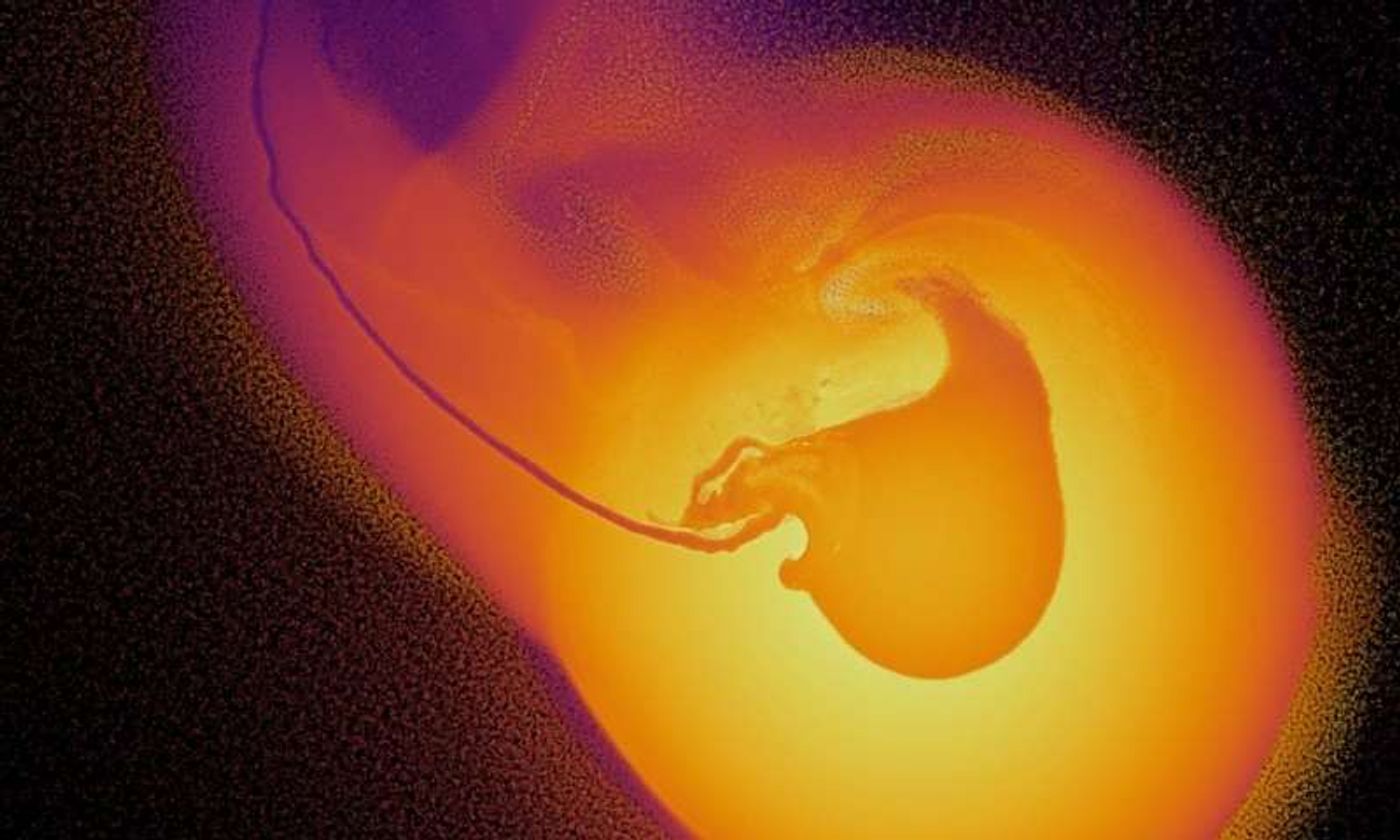Uranus' Unusual Characteristics Explained By New Study
Uranus, with its near-sideways 98-degree tilt and incredibly low atmospheric temperatures, is one of the most obscure planets to exist in our planetary neighborhood.
The planet’s unique qualities have captivated astronomers for ages, while attempts to explain them have led to an overabundance of theories. Now, researchers from Durham University think they’ve nailed it, and the results of their latest study appear in The Astrophysical Journal.
Image Credit: Jacob Kegerreis/Durham University
Citing the paper, an object measuring twice the size of modern Earth probably collided with Uranus in the distant past. The identity of such an object? Perhaps an early-solar system proto-planet comprised of icy and rocky materials.
This collision would have allegedly been impactful enough to knock Uranus on its side. That aside, the very same collision likely resulted in a shell of material surrounding Uranus’ core, which would have insulated the planet’s upper atmosphere from its internal heat source and lowered its temperature to the chilling -357º Fahrenheit we observe today.
Related: Some of Uranus' moons could collide with one another
“Uranus spins on its side, with its axis pointing almost at right angles to those of all the other planets in the solar system,” explained study lead author Jacob Kegerreis from Durham University's Institute for Computational Cosmology. “This was almost certainly caused by a giant impact, but we know very little about how this actually happened and how else such a violent event affected the planet.”
“We ran more than 50 different impact scenarios using a high-powered supercomputer to see if we could recreate the conditions that shaped the planet's evolution,” he continued. “Our findings confirm that the most likely outcome was that the young Uranus was involved in a cataclysmic collision with an object twice the mass of Earth, if not larger, knocking it on to its side and setting in process the events that helped create the planet we see today.”
Related: Here's what Uranus' version of the Aurora Borealis looks like
In addition to making sense of these peculiar Uranus-centric qualities, the researchers say that the simulations may also explain how Uranus received planetary rings and developed an off-center magnetic field.
The study not only brought more clarity to Uranus’ unique situation, but it brings astronomers one step closer to understanding the handful of exoplanets that appear to share many chemical and physical characteristics with Uranus.
Future studies will likely build from what we’ve learned to paint an even more detailed picture, and it ought to be interesting to see what we find.
Source: EurekAlert









